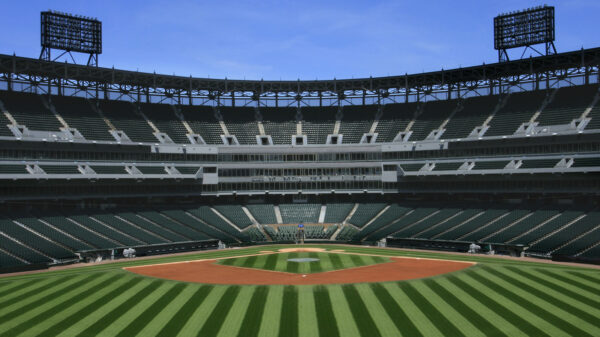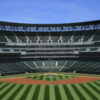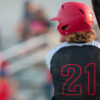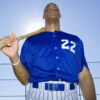Share
Tweet
Share
Share
Baseball is a game rich with its own unique vocabulary. Whether you’re a newbie or a long-time fan, getting familiar with the lingo can deepen your appreciation of the sport. Let’s go through some key terms from A to Z to help you sound like a pro.
A – At-Bat (AB)
An at-bat is a player’s turn hitting against a pitcher. It’s one of the basic stats tracked in a game, and it helps calculate a player’s batting average. Not every trip to the plate counts as an at-bat; for example, walks and sacrifices are excluded.
B – Balk
A balk is an illegal motion by the pitcher, often designed to deceive the baserunner. If the umpire calls a balk, each runner gets to advance one base. It’s a quirky rule, but it keeps the game fair.
C – Curveball
A curveball is a type of pitch that has a unique spin, causing the ball to dive as it approaches the plate. It’s a tricky pitch for hitters to track and hit, making it a popular choice for pitchers.
D – Double Play
A double play occurs when two outs are made in one continuous play. For example, a ground ball might be fielded and thrown to second base for one out, then quickly thrown to first base for another. It’s a pitcher’s best friend because it clears the bases and helps get out of tight spots.
E – Error
An error is a mistake by a fielder that allows a batter or runner to advance a base when they shouldn’t have. It doesn’t count against a pitcher’s earned run average (ERA), but it can still impact the game’s outcome.
F – Foul Ball
A foul ball is any hit ball that lands outside the lines extending from home plate past first and third bases. Foul balls can be frustrating for hitters as they don’t count as hits but do count as strikes, unless there are already two strikes.
G – Ground Rule Double
A ground rule double happens when a fair ball bounces out of play, like over the outfield fence. The batter and any runners are awarded two bases. It’s a rule that ensures fair play when the ball leaves the field.
H – Home Run
A home run is one of the most exciting plays in baseball. It occurs when a batter hits the ball out of the park in fair territory, allowing him to circle all the bases and score a run. It’s a crowd favorite and a major goal for hitters.
I – Infield Fly Rule
The infield fly rule is called when a fly ball can be caught by an infielder with ordinary effort, and there are runners on first and second, or the bases are loaded with less than two outs. The batter is automatically out, preventing a sneaky double play.
J – Jamming a Hitter
When a pitcher throws the ball inside on a hitter, making it difficult to extend their arms, it’s called “jamming” the hitter. This usually results in weak contact, like a pop-up or ground ball.
K – Strikeout
A strikeout, denoted by the letter “K,” occurs when a batter accumulates three strikes during their at-bat. It’s a big moment for the pitcher and a letdown for the batter.
L – Line Drive
A line drive is a hard-hit ball that travels in a straight line, typically low to the ground. It’s one of the most difficult types of hits to defend against because of its speed and trajectory.
M – Mound Visit
A mound visit occurs when a coach, manager, or another player visits the pitcher on the mound, usually to discuss strategy or calm the pitcher down. There are limits to the number of mound visits allowed per game.
N – No-Hitter
A no-hitter is a rare feat where a pitcher, or a combination of pitchers, prevents the opposing team from getting any hits over the course of the game. It’s a big achievement and celebrated in baseball lore.
O – On-Base Percentage (OBP)
On-Base Percentage is a statistic that measures how often a batter reaches base, whether by hit, walk, or being hit by a pitch. It’s a key metric for evaluating a player’s offensive contribution.
P – Pickoff
A pickoff is a move where the pitcher throws to a base to get a runner out who is too far off the base. It’s a tactical play aimed at catching runners off guard and preventing them from stealing bases.
Q – Quick Pitch
A quick pitch is when the pitcher delivers the ball before the batter is ready. It’s usually against the rules because it can be dangerous, as the batter isn’t fully prepared to react.
R – RBI (Runs Batted In)
An RBI is awarded when a batter’s action at the plate results in a run being scored. It’s a key stat for measuring a player’s offensive impact on the game.
S – Sacrifice Fly
A sacrifice fly occurs when a batter hits a fly ball that is caught but allows a runner to score from third base. The batter is out, but it doesn’t count as an at-bat and helps the team score.
T – Triple Play
A triple play is a rare and exciting event where three outs are recorded in one continuous play. It’s a pitcher’s dream and often a game-changing moment.
U – Utility Player
A utility player is someone who can play multiple positions on the field. These players are highly valued for their versatility and ability to fill in wherever needed.
V – Velocity
Velocity refers to the speed of the pitch. Pitchers with high velocity are often more difficult to hit, as the ball reaches the batter more quickly.
W – Walk-Off
A walk-off occurs when the home team scores the winning run in the bottom of the last inning. It’s a dramatic and thrilling way to end a game, especially for the home crowd.
X – Extra Innings
Extra innings are played when the game is tied at the end of the regulation nine innings. The game continues until one team has more runs at the end of an inning.
Y – Year-End Awards
At the end of each season, players and managers are awarded honors like MVP (Most Valuable Player), Cy Young (best pitcher), and Rookie of the Year. These awards recognize the best performances of the season.
Z – Zone
The strike zone is the area over home plate that a pitch must pass through to be called a strike, as long as the batter doesn’t swing. The zone’s height is determined by the batter’s stance.















